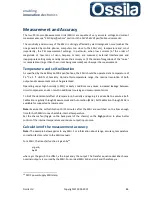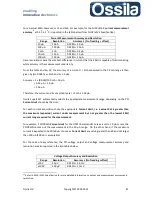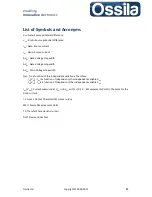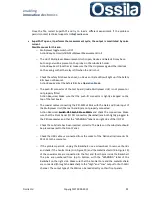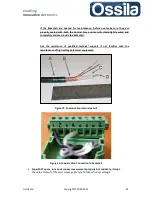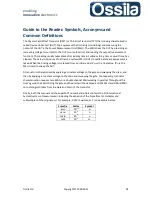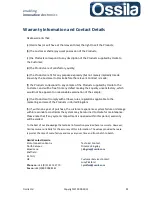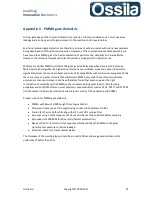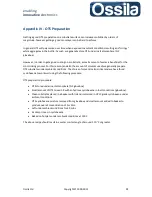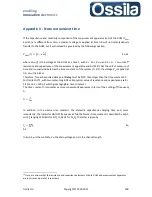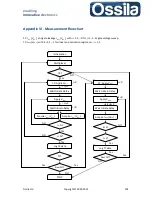
enabling
innovative
electronics
Ossila Ltd
Copyright © 2009-2015
100
Appendix V - Note on transient time
If the capacitance and resistivity component of the measurement apparatus and of the DUM (
C
DUM
and
R
m
) are different from zero, a constant voltage V
0
applied at time t=0 will not instantaneously
transfer to the DUM, but it will instead be governed by the following equation,
, Eq A1
where
V
DUM
(
t
) is the voltage at the DUM at a time
t
, with R =
R
m
+
R
DUM
and C =
C
m
+
C
DUM
total
28
resistance and capacitance of the measurement apparatus and DUM.
RC
has the unit of measure of
time and is usually indicated as the time constant
τ
of the system (
τ
=
RC
). If a voltage V
0
is applied at
t
=0,
V
DUM
(
τ
)≈0.63 V
0
.
Therefore, for each acquired data point
Delay
must be 9/10 time larger than the time constant RC.
For Ossila FACT1, with two meter-long BNC cable, typical value of resistance and capacitance are R =
1.4 Ω and C = 250 pF, which gives negligible time constant
τ.
The time constant
τ
is sometimes more conveniently expresses in term of the cutting off frequency
f
c
,
.
In addition to the device time constant, the dielectric capacitance charging time and, more
importantly, the transistor ON/OFF frequency. While the former time constant is described by EqA1,
with
f
c
ranging 1250 KHz for SiO
2
to 9 KHz for Al
2
O
3
, the latter is given by
. Eq
A2
In Eq A2,
μ
is the mobility,
V
DS
the drain voltage and
L
is the channel length.
28
Here, we assume that the resistance and capacitance elements of both DUM and measurement apparatus
are in series and parallel, respectively.

